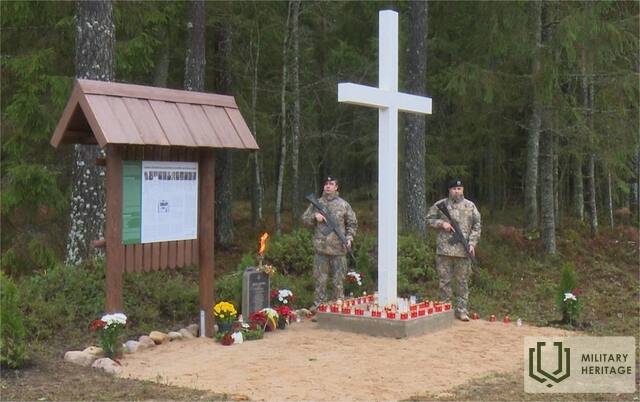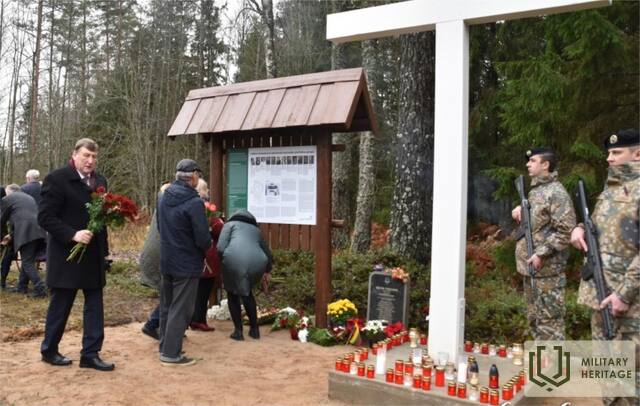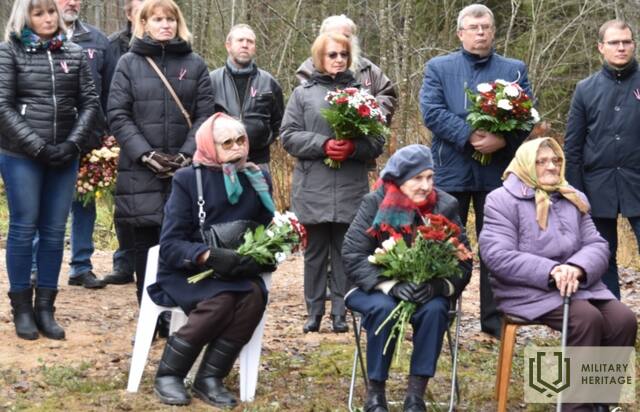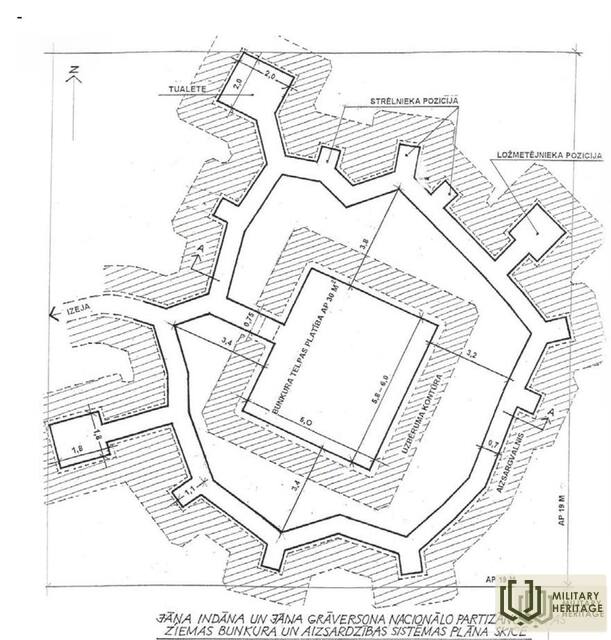J. Indānso, J. Grāvelsono ir M. Pokļevinskio nacionalinių partizanų grupių narių atminimo vieta
Memorialinė vieta


 160
160



Lačplėsio dieną – 2019 m. lapkričio 11 d. – buvo atidarytas Indano-Grāvelsono nacionalinių partizanų grupės informacinis stendas ir atminimo vieta Kalnos valsčiuje, Jekabpilio rajone, Sūpės purvo apylinkėse. Jo atidaryme dalyvavo Jekabpilio ir Viesytės regionų atstovai, buvęs nacionalinis partizanas H. Miezīte, istorikas H. Bruņinieks, taip pat svečiai iš Lietuvos ir kiti susidomėję asmenys. Atminimo vieta ir stendas yra netoli Sūpės purvo, kuris siejamas su nacionalinių partizanų gyvenviečių ir mūšių vietomis. Giliau miške taip pat buvo Indano-Grāvelsono grupės bunkeris.
Po Latvijos gyventojų deportacijų 1949 m. kovo 25 d. buvo sunaikinta nacionalinių partizanų aprūpinimo sistema. Nuo 1949 m. vasaros iki 1952 m. vidurio nacionalinis partizanų judėjimas Aknystės, Saukos, Elkšnių, Biržų ir Viesytės apylinkėse išgyveno nuosmukį, nes kentėjo nuo etninio valymo ir reguliarių sovietų armijos bei saugumo institucijų kontrpuolimų. Janio Indano ir Janio Grāvelsono nacionalinių partizanų grupės įsikūrimas Elkšnių miške 1949–1950 m. žiemą turėjo labai rimtą, tuo metu nebūdingą gynybos sistemą, kurios 1950-aisiais nebuvo niekur kitur Latvijoje ar kaimyninėje šalyje Lietuvoje. Indano-Grāvelsono grupės bunkeryje buvo specialiai sukurti perimetro gynybos apkasai ir patrankų lizdai. Greta partizanų karinio pasirengimo paaukoti savo gyvybes kovoje su priešu, galima kalbėti ir apie jų ypatingą tapatybę, kuri pasireiškė ir kitų šeimos narių įsitraukimu į nacionalinių partizanų gretas.
Jungtinę Indano-Grāvelsonų partizanų grupę sudarė 12 žmonių, tarp kurių buvo penkios moterys ir vienas Lietuvos partizanas: Jānis Indāns, Jānis Edvards Grāvelsons, Alma Grāvelsone, Pēteris Indāns, Kristīne Indāne, Milda Ārija Indāne, Vasilijs Sokolovs, Voldemārs Otto Sātnieks, Jonda Sātnieks, Jānis Ķepiņš. Žukauskis. Paskutinis jų mūšis įvyko 1950 metų vasario 25 dieną Elkšnių girioje, kai mūšyje su neproporcingai stipriomis jėgomis krito 11 partizanų. Išgyveno tik Hilda Vietniece (Miezīte), kuri buvo sugauta ir vėliau šešerius metus praleido kalėjime Gulago lageriuose.
Panaudoti šaltiniai ir literatūra:
H. Bruņinieks. Apgaudinėja mirtį. Ryga: Latvijos žiniasklaida, 2022, 232-236 p.
https://www.youtube.com/watch?v=TgP9yTWbD5g
https://latvijaspieminekli.lv/pieminas-vieta-indana-gravelsona-apvienotojai-nacionalo-partisanu-grupai/
https://www.jekabpilslaiks.lv/lv/zinas/jekabpils-novada-atklas-nacionalajiem-partizaniem-veltitu-pieminas-vietu/
Susijusi laiko juosta
Susijusi istorija
Selio miško brolių gyvenvietė Sūpės pelkėje
Sūpės pelkė siejama su nacionalinių partizanų gyvenviečių ir mūšių vietomis, kurios susiformavo sąveikaujant žmonėms ir vietovėms. Ji aprašyta tremtinio latvių rašytojo Alberto Eglīčio baladėje apie įvykius jo gimtojoje Sūpės pelkėje „Samanose ir purve“ – duoklėje Sūpės pelkės partizanams:
... „1945 m., kai pelkėje švytėjo ruduo –
Pokļevinskio gimtadienio proga Lieljānis vakarienės metu dalijasi:
Gluosniuose fermentuotas alus,
Romulanai garbina sviestą,
Džiovinu mamos kmynų duoną,
Džiovintas kumpis kovo mėnesio gabalėliuose,
Ir Stučkos svogūnai,
Ildzeniecės sūris.
Kambariai dervingose sienose
Ir žaibas trenkė širdyse,
Ir vienuolikoje sielų merdi –
"Žemėje supuvusios šaknys..."
Ši praeities interpretacija su įvykiais po Antrojo pasaulinio karo apėmė žmonių liudijimus, dvasios išraiškas ir vertybių sistemas. Ji primena visuomenės paramą nacionaliniams partizanams, kurių okupacinė valdžia negalėjo taip lengvai nugalėti.








